Mysterious by shape, mythical by reputation, medieval by origin, the Cârța Cistercian Abbey is a place I read about, I dreamed of, returned to, and wrote about in my latest book, Dreamland.
Where is Cârța Cistercian Abbey?
If you are a fan of history or plan to travel to Transylvania, Romania, any time soon (be it by book or train) you will want to explore the Cistercian Abbey at Cârța, Sibiu County, located 90 min by car from Brasov, closer to Sibiu, and only 30 min from Făgăraș Fortress.
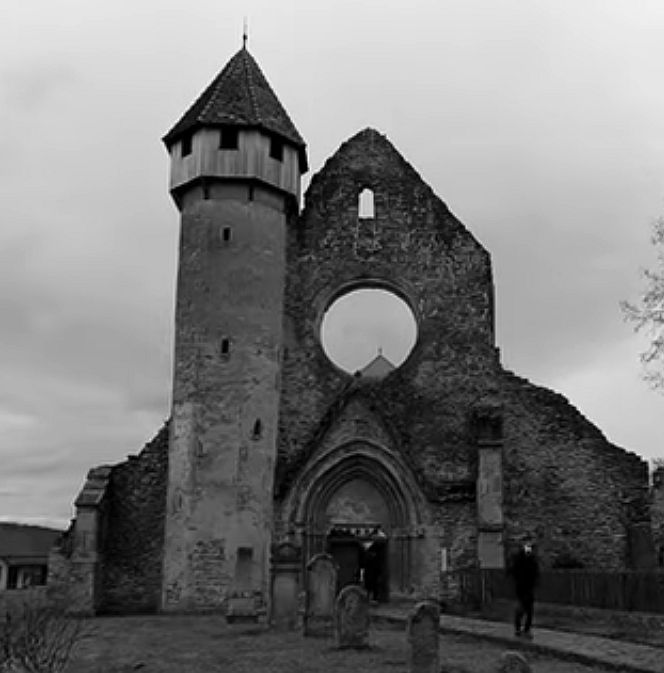
From its Gothic height the Cistercian Abbey at Cârța looks over Europe, being the most Eastern monument the Cistercians monks arriving from France (the Hungarian King had just taken a French wife), the White Monks, have constructed on the old continent during the 13th century.
It was on this land, between Sibiu, Fagaras and Bran Castle, that the German settlers also stopped and built new homes during the massive middle-ages migration from Western Europe to Transylvania.
The monastery was built on the border between Fagaras Country, which already had a majority ethnic Romanian population (from which land was taken for this purpose), and Sibiu, home to many Saxon (German) settlements.
The place was known as the land between the Black Valley and the Crab Valley, on the left bank of Olt River; the Saxons lived on the right bank. But the land was swampy, the Cistercian monks being renowned at raising durable constructions on such treacherous grounds.
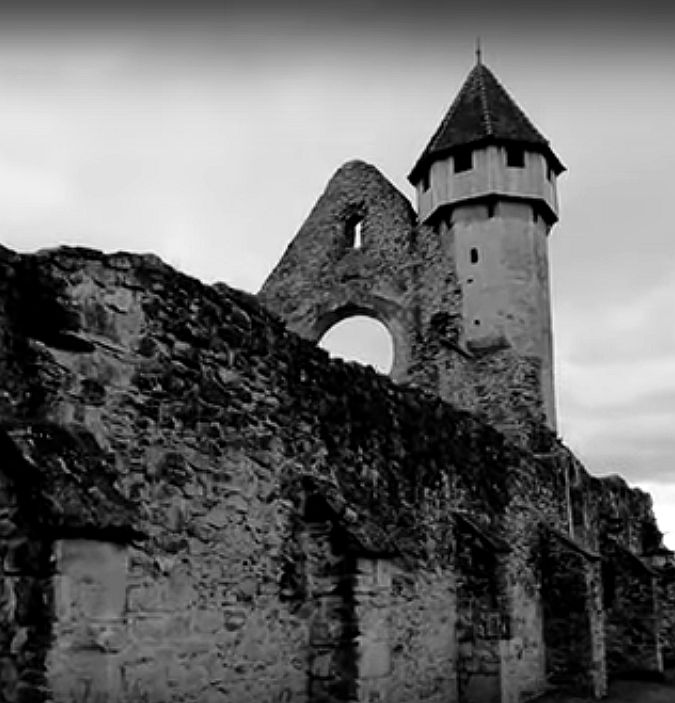
Who were the White Monks, the Cistercian Monks?
The nickname White Monks was given in reference to the color of the cowl – the long, hooded robe with wide sleeves – worn by the Cistercians over their habits, as opposed to the black cowl worn by Benedictines. The Cistercians monks are also known as Bernardines, after Saint Bernard.
The name Cârța derives from German Kerze, meaning candle, as the monastery was dedicated to St Mary with Candles.
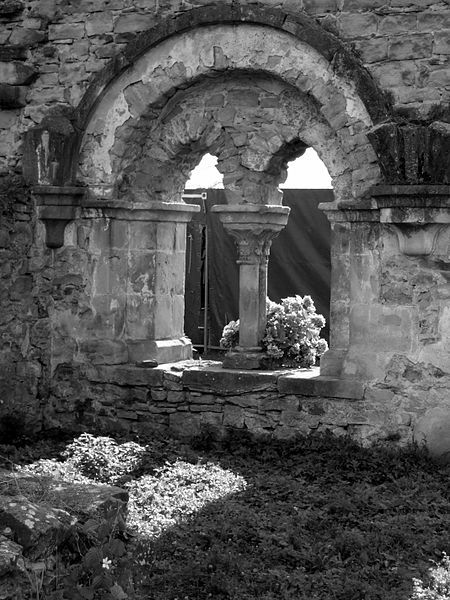
The Austere Life of a Cistercian Monk
Hardworking as they were, and crafty builders, the Cistercians monks were renowned for their fishing skills, their love for wine (made from vines most probably brought from their natal Burgundy and grafted on local ones), but also for their austere lifestyle, following the rules put forth by St. Benedict. And these were strict. Only two meals during the busy months of summer, and one meal on Wednesdays and Fridays, the traditional fasting days in addition to Lent. But beeswax or fat to keep candles burning was scarce and expensive, so the evening meal would have taken place at time when the tables were not required to be lit by candlelight (so before 5pm in winter).
Their diet consisted mainly out of vegetable dishes, some fish or poultry, fruits from the monastery’s gardens, occasional cheese, rudimentary millet bread, and very little if no fat at all. They ate dark rye bread (rationed), and drank wine mixed with water. And after about 50 years of living on this land they were finally granted the right (by the all-mighty Hungarian Kings) to dig a channel to the river and build a watermill. Many villagers (there were as many as ten settlements around) came to the monastery to mill their grains.
The everyday life of a Cistercian monk wold have been an austere one, following strict rituals, with prayers every three hours. Their living quarters, one communal room, was not heated; they would sleep on ballots of hey lay on wooden floors, and speak to one another only if necessary – the rigor of the Cistercian way of life insisting on silence unless speech is really necessary. The Cistercian spirit can be summed up by the words “ora et labora“, “pray and work”. No wonder few reached the age of 35 – 40 years old.
Cistercian Symbols
The Cistercian staff was much like a shepherd’s staff with a cross engraved at the bottom. It was meant to remember that even in moments of uncertainty, when one was about to wander off like a stray sheep, Jesus and faith were still there to help one return to the righteous path.
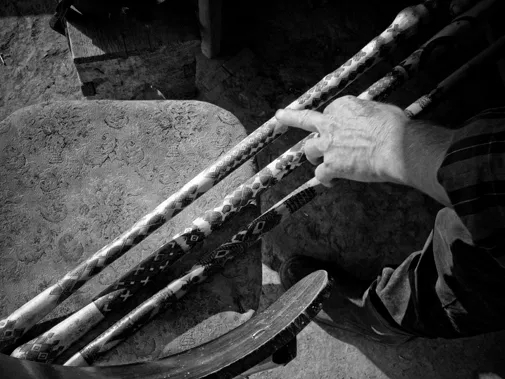
Another symbol of the Cistercians monks is the sun cross:


Listening to the Ruins of Cârța Abbey
The Cârța Cistercian Abbey as we know it today has seen many reconstructions over the centuries as fire, the Tatar raids (1241-1242), then the Ottomans plundering have destroyed and crumpled parts of it.
In 1205 the very first to be raised was a wooded sanctuary and beech was probably used. It would have been enough for the first monks to pray and take rudimentary shelter. The monastery that rose further was one out of stone, under the care of the newly arrived stone masons, also monks. A stone chapel rose first, how else, and with thick, massive walls. The layout of the monastery, with a thick wall for protection during those medieval troubled times, followed. And more local people came, as villages developed nearby. Today, the parochial house of Cârța Abbey is the oldest house in Transylvania that is still inhabited.
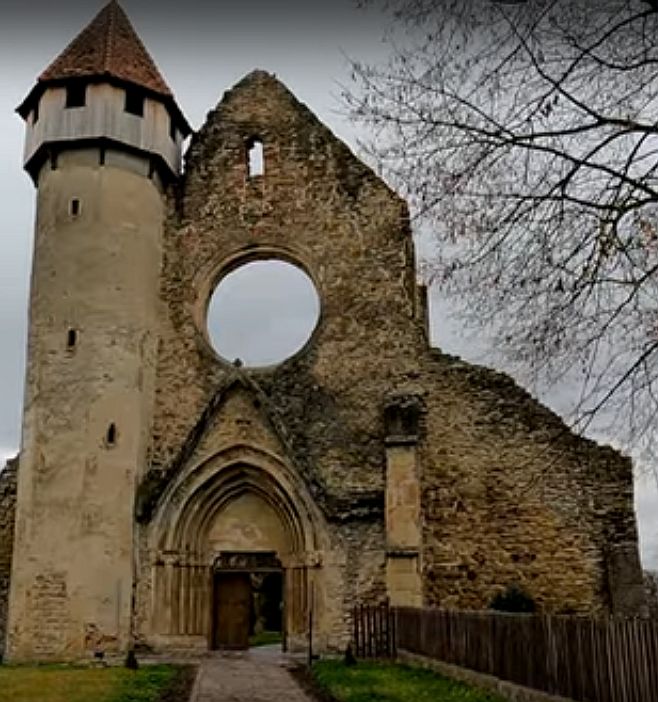
Such a mysterious, mythical, and medieval place, steeped in history as is the Cârța Cistercian Abbey will be surrounded by many legends. One of them was inspired by the austere life-style of the monks. It is said that you can still hear their pain.
Is it because of the place, dead quiet still ? Is it the organ music, lost in the drifts of universe like an echo from a dark past? Or are the whispers that linger behind ruins, hidden underneath rocks, or escaping from between creaking floor boards – moans of pain, the last breath of those monks departed too soon? Was their last breath left behind, filled with the questions of life that could have been – if only it was lived else?
I think not. I think that the feeling of awe toward what these monks were able to built, so ahead of their times, the mystery of a life filled with little, but still fulfilling, still persists and it has been cemented among the walls of their abbey. Still standing.
Such as the altar, still standing, although the nave has only side walls remaining, and is open to the heavens.
To build such a high altar the monks had a kind of crane built, activated by two monks that walked inside a wheel used to lift heavy stone boulders in order to build:
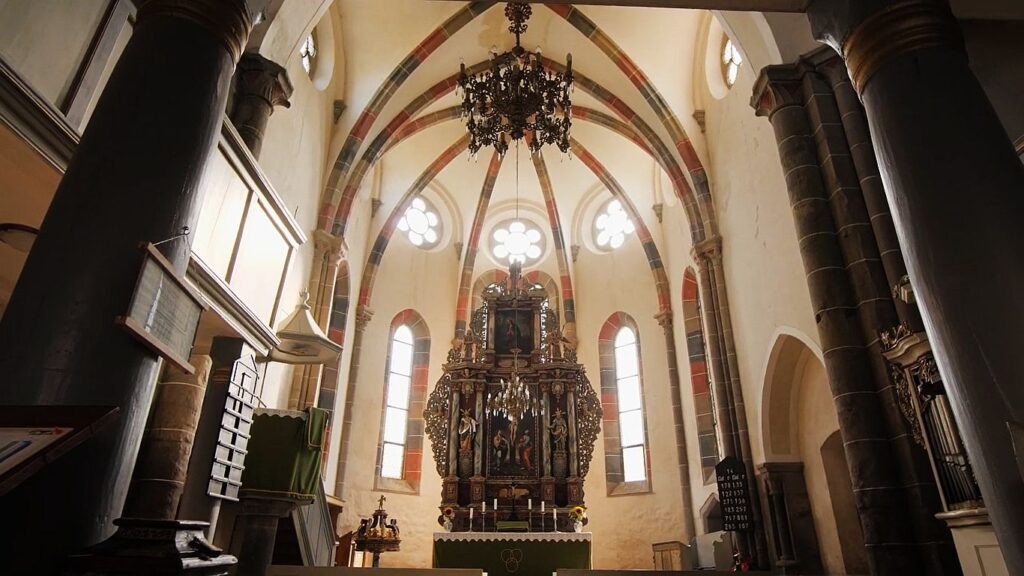
Altar, above: back walls in Gothic style, 1250. The wooden construction is Baroque from 1750.

Small miracles, such as the rocks glued together by a mix of sand, water, quick lime, and… egg white. It was a slow binding process, but the monks had all the time in the world, and the walls they put up still stand:

Do ut des, I give so that you may give – a lesson learned
Legend says that there was a wild rose growing right outside the abbey’s walls. It appeared to have grown from within the foundation. The wild rose was outside the wall nearing the holy water font or stoup, the vessel containing holy water which is generally placed near the entrance of a church. The monks, on entering the church, would dip their fingers in the holy water, cross themselves, then shake the excess through a recess in the wall. The water dripped, dripped… outside, where soon a rose grew. And flourished.
Thank you for traveling with me to the mysterious Carta Cistercian Abbey. I wrote about it (Story 51. Towering at Carta Monastery, a Saxon Legend) in my latest book:


What’s left of the Abbey looks so impressive. Too bad the rest is gone. It must have been a little wonder of a building. And you tell its story so beautifully, the feeling of loss is heightened.
Very much so, Jo. A sad story, ye what is left standing is still imposing.
You Are So Kind to always read my tales and be so supportive 😉 Thank you!
Your stories of ancient buildings always remind me how much the people of those times achieved and created with none of the equipment we take for granted today.
So true, Peter. Maybe we should learn – and strive to be as resourceful. But after reading your last blog post, I know that you are.
Season’s Greetings.